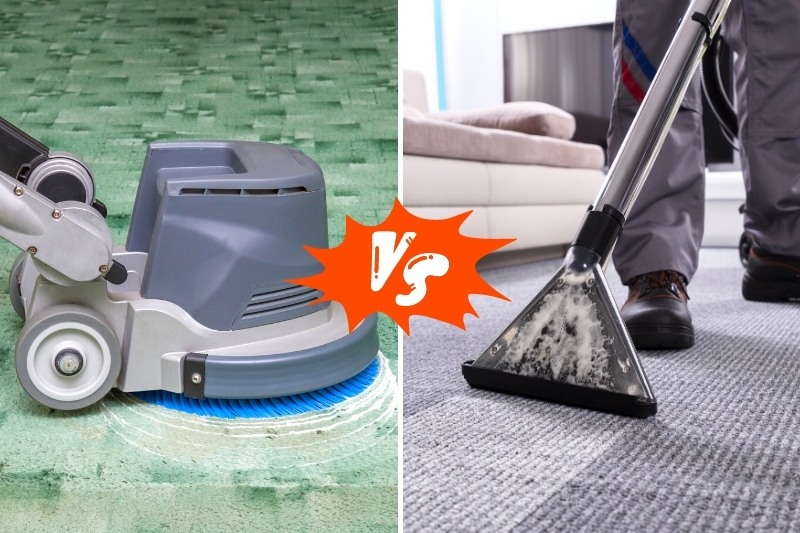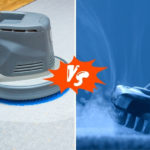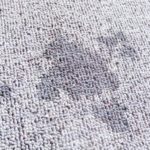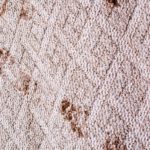No matter how hard you try, dust, grime, dirt, and other substances will start to accumulate on your carpet. Add a few accidental spillages, and you’ll soon have a stained, discoloured floor that has seen much better days.
Everyone knows to vacuum their carpets regularly to help keep them clean. But unfortunately, this is not enough to remove tough stains or build-up from deep within the carpet pile.
To keep your rug looking in top condition for years to come, you need to thoroughly clean it to remove all traces of dirt.
Two of the most common ways of cleaning a carpet are bonnet cleaning and extraction. However, most people don’t know how to use either of these techniques.
To help you with this, we have compiled a handy guide comparing bonnet cleaning vs. extraction. This should help you decide which carpet-cleaning techniques are right for you.
What Is Bonnet Carpet Cleaning?
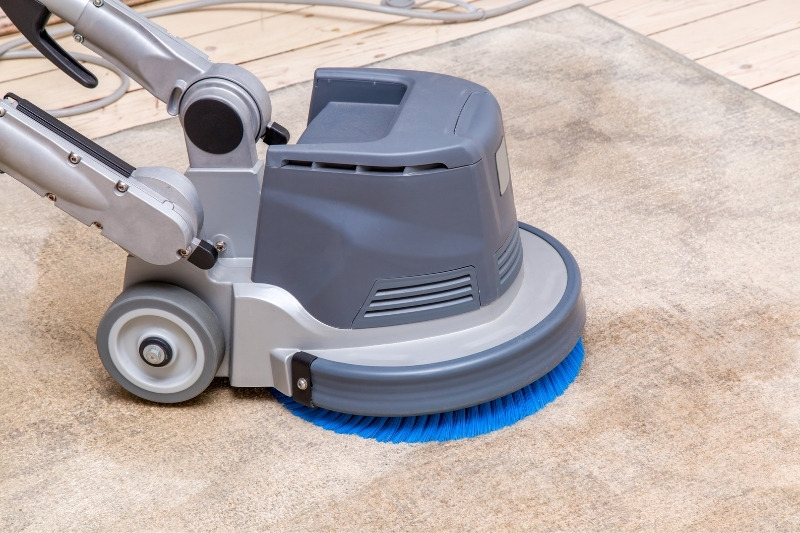
Bonnet cleaning is an older carpet-cleaning method similar to floor buffing. A cleaning solution is sprayed onto the surface of the rug or carpet, and then a round bonnet scrubs at the pile in a circular motion.
This bonnet will be fitted with an absorbent pad that attracts the dirt build-up, leaving your carpet looking clean and bright.
Pros of bonnet carpet cleaning
Bonnet cleaning removes any surface-level dirt with ease, making it especially good for spot cleaning and freshening your carpets.
In addition, when using an antimicrobial cleaner, it effectively removes harmful bacteria from your rug as well as top-level grime and spillages.
Because this cleaning methods doesn’t involve water, you can typically start using your carpet again a few hours after cleaning.
This means it is an excellent option for areas of flooring that are hard to close off for extended periods (e.g., in a lobby or office building).
Bonnet machines are also relatively cheap to buy and don’t require any specialised skills to use.
Cons of bonnet cleaning
The main challenge with bonnet cleaning is ensuring you change the absorbent pad frequently. If you continue to use a pad once it has become saturated with dirt, the bonnet will move the grime around the carpet rather than remove it.
We suggest vacuuming your rug before bonneting to reduce the number of pads needed.
Unfortunately, bonnet cleaning will not be able to remove grime from deep within the carpet pile and can leave behind a residue that will make your rug soil quicker.
The harsh scrubbing motion of the bonnet machine can also cause your carpet to fray and come apart at the seams; as such, it is not usually recommended for long-term care.

Summary of bonnet carpet cleaning
Pros
- Relatively cheap
- Quick turnaround
- Doesn’t require specialised skills
- Effectively remove surface-level dirt
- Great for spot cleaning and freshening
Cons
- Will not remove deep-set dirt
- May leave behind a residue
- Can cause your carpet to fray
What Is Extraction Carpet Cleaning?

Extraction carpet cleaning (also known as hot water extraction) is considered the safest and most effective carpet-cleaning method by many professionals.
It works by spraying your carpet with hot water and detergent while simultaneously vacuuming up the dislodged dirt and debris.
Pros of extraction cleaning
Very little detergent is required for extraction cleaning, as the high temperature and pressure of the water loosens the majority of the dirt.
This means that no residue is left in the carpet pile and that it is safe for those who often find themselves allergic to detergents or other cleaning chemicals.
The use of water also allows even the toughest stains (such as coffee spillages) and most worn-in dirt to be removed from the carpet pile without causing any damage to the rug. This makes it an excellent choice for deep cleaning.
Cons of extraction carpet cleaning
When using the extraction carpet cleaning method, your floors will need up to 24 hours to dry.
If you don’t remove all the excess moisture from the carpet, it can also become a breeding ground for mould and mildew.
Moreover, the effectiveness of this method is the result of four components:
- The chemicals in the detergent
- The water pressure
- The water temperature
- The suction power
Because of the cost of these machines and the knowledge needed to balance these components correctly, extraction cleaning typically requires professional help.
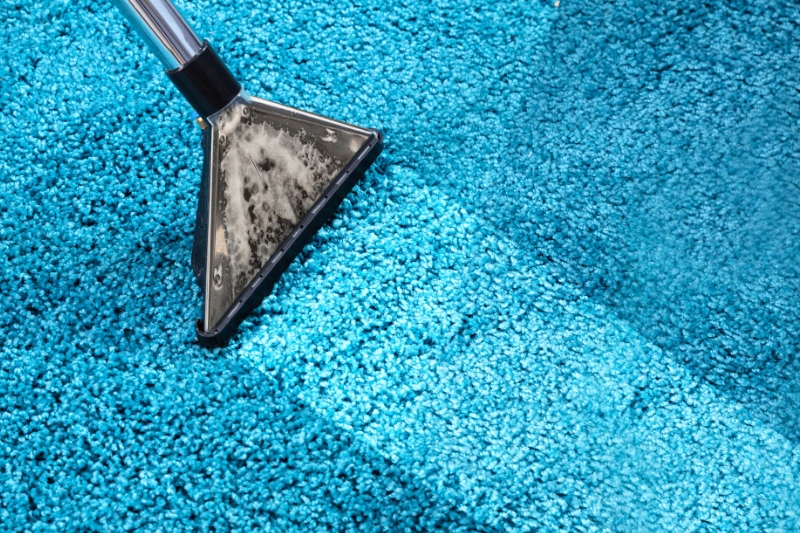
Summary of extraction carpet cleaning
Pros
- Unlikely to cause damage
- Can remove dirt and stains from deep within the carpet pile
- No residues are left behind
- Good for those with skin allergies
Cons
- Machines are expensive
- Specialised skills are required
- Long drying times
- Can lead to mould growth
Bonnet vs. Extraction – Which Type of Carpet Cleaning Is Best?
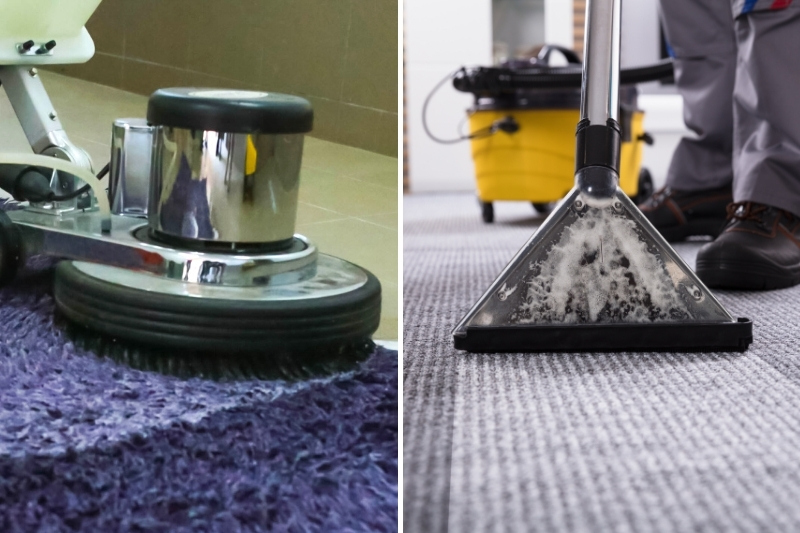
Both bonnet cleaning and extraction have their advantages and can keep your carpet looking fresh and clean.
However, we recommend using extraction cleaning wherever possible to ensure all traces of dirt and debris are removed.
The exception to this is when your floors have always been cleaned with a bonnet machine in the past.
In this case, we suggest sticking with bonnet cleaning as extraction may cause some of the trapped dirt and stains that have been pushed down over the years to become more apparent, causing unwanted discolouration.
If desired, you can also combine these cleaning methods. For example, you could use extraction a few times a year and then use bonnet cleaning to help keep your carpet looking fresh between these deep cleans.
You can also use bicarbonate of soda or white vinegar to freshen up your flooring if this suits you better.

Hannah has a passion for cleaning. She worked her way around Australia by cleaning hostels in exchange for free accommodation and used her cleaning skills to bag a job as a chalet host for a luxury ski company in France.
